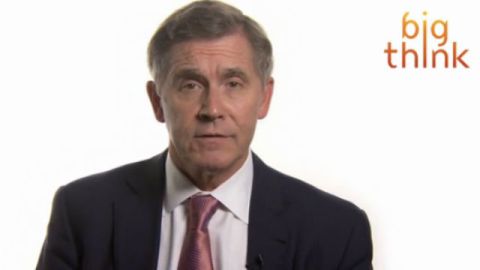A Connected Education: Increasing Access to Technology

John Davies is an expert on bringing technology into classrooms. As the general manager of the Intel World Ahead Program, Davies’ mission is to understand how to increase access to technology in underserved parts of the world.
Big Think caught up with Davies at the Global Education & Skills Forum in Dubai, which brought together governments and private industry to discuss improving education worldwide.
“In my specific area I focus on digital divide—lower income—and spent a lot of time in the education world,” he says, “to help [governments] implement these programs in their countries.” The Intel Teach program has already trained 12 million teachers worldwide.
There are a myriad of ways technology can enhance education. Technology connects classrooms with the world. A teacher in, say Boston, can lecture to students in Lucknow, India.
What’s the key to bringing technology into more classrooms? Private and public sectors must work together like partners, says Davies. “If you look at trying to reach the schools, every teacher with a laptop, to drive their education programs,” says Davies. “You’ve absolutely got to reach [them] with solutions and affordability that make sense to them.”
Computers and tablets are increasingly entering emerging markets following the prepaid model of mobile phones. The cost of broadband continues to be a problem and can even cost more than the devices.
“In Africa three years ago the average price of broadband was $30 a month. Well, maybe two percent of Africans could afford that. Today you can buy it in one-dollar increments,” he says.
Davies continues to see developing markets transform as he works with governments and local companies to further the use of technology in classrooms where it’s needed most.




